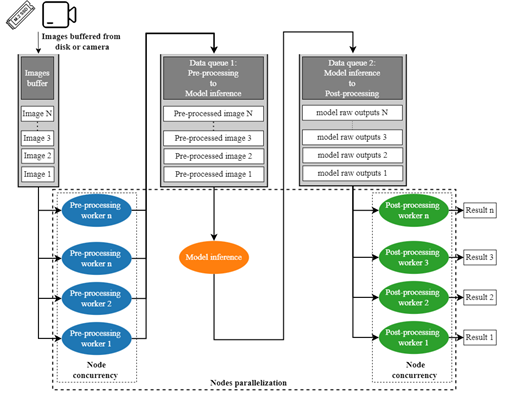High-Speed Railway Track Components Inspection Framework Based on YOLOv8 with High-Performance Model Deployment
已发布 09 四月, 2024
In railway maintenance, the integration of artificial intelligence (AI) and deep learning technologies marks a shift from traditional inspection methods. A new study published in High-speed Railway introduces a high-performance rail inspection system, leveraging the latest advancements in AI, specifically employing YOLOv8 for fast and accurate defect detection.
“We developed a model inference pipeline based on a producer-consumer model, utilizing parallel processing and concurrent computing to significantly enhance inspection speeds and efficiency,” shares co-author Yu Qian, an associate professor int the Department of Civil and Environmental Engineering at University of South Carolina. “Deployed using tools such as C++, TensorRT, float16 quantization, and oneTBB, our system increased processing speeds, achieving up to 281.06 FPS on desktop systems and 200.26 FPS on edge computing platforms.”
This study responds to the critical need for timely and efficient railway inspections, especially in high-speed networks where maintenance windows are limited. By incorporating AI and optimizing the entire inference pipeline, the researchers managed not only to increase the speed of inspections but also maintain high accuracy levels.
The utilization of YOLOv8 and a sophisticated model inference pipeline signifies a departure from sequential processing, addressing the bottleneck issues commonly found in data pre-processing and post-processing stages.
“This approach not only streamlines the inspection process but also sets a new standard for real-time inspection capabilities in the railway industry,” adds Qian. "Our findings offer a new perspective on how AI can transform railway maintenance, potentially reducing the risk of accidents and enhancing the safety and reliability of railway networks. The significant increase in processing speed without compromising accuracy opens up new possibilities for real-time decision-making in track maintenance."
The success of the new approach suggests a promising direction for future research and application in other areas of infrastructure maintenance, emphasizing the role of AI in improving public safety and asset management.

Image: Producer-consumer inference pipeline based on nodes parallelization and concurrency
Contact author details:
Yu Qian, Department of Civil and Environmental Engineering, University of South Carolina, Columbia, South Carolina, 29208. yuqian@sc.edu
Funder:
Federal Railroad Administration
Conflict of interest:
The authors declare that they have no competing interests.
See the article:
Tang, Y., & Qian, Y. (2024). High-speed railway track components inspection framework based on YOLOv8 with high-performance model deployment. High-speed Railway. https://doi.org/10.1016/j.hspr.2024.02.001.